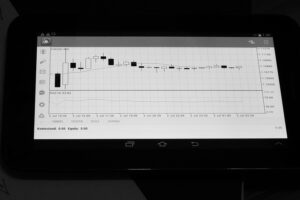The Digestive Journey: An Illustrated Guide to Your Body’s Breakdown
The human digestive system is a complex and fascinating network that plays a crucial role in our overall health. It transforms the food we consume into essential nutrients and energy while eliminating waste. This article provides a comprehensive overview of the digestive process, detailing each step of the journey food takes from ingestion to excretion. Additionally, we will explore how this intricate system functions and the common issues that can arise along the way.
I. Introduction to Digestion
Digestion is the biochemical breakdown of food, enabling the body to absorb nutrients. The process begins at the moment food enters the mouth and continues through various organs until waste is excreted.
A. Importance of Digestion
Digestion is vital for several reasons:
- Nutrient Absorption: It allows the body to extract and utilize nutrients, including carbohydrates, proteins, fats, vitamins, and minerals.
- Energy Generation: The calories from food are converted into energy, which fuels all bodily functions.
- Immune Function: A healthy digestive system is crucial for a robust immune response.
- Homeostasis: Digestive processes help maintain internal balance, including pH levels and hydration.
B. Overview of the Digestive System
The digestive system consists of several organs and glands, including:
- Mouth: The entry point where mechanical and chemical digestion begins.
- Esophagus: A muscular tube transporting food to the stomach.
- Stomach: A muscular organ where food is mixed with digestive juices.
- Small Intestine: The site of most nutrient absorption.
- Large Intestine: Responsible for water absorption and waste formation.
- Liver: Produces bile, essential for fat digestion.
- Pancreas: Produces digestive enzymes and hormones.
- Gallbladder: Stores and releases bile.
II. The Digestive Process
A. Step 1: Ingestion
Ingestion is the first stage of the digestive journey. When food enters the mouth, it is physically broken down by the teeth through chewing (mastication) and mixed with saliva.
1. Role of Saliva
Saliva contains enzymes, including amylase, which begin the breakdown of carbohydrates. Saliva also lubricates food, making it easier to swallow.
B. Step 2: Propulsion
Once food is adequately broken down, it is pushed into the esophagus, a muscular tube that connects the mouth to the stomach.
1. Peristalsis
Peristalsis is a series of wave-like muscle contractions that move food through the esophagus. This involuntary process continues throughout the digestive tract.
C. Step 3: Stomach Digestion
Upon reaching the stomach, food encounters a highly acidic environment (pH 1.5 to 3.5). Here, the following occurs:
1. Mechanical Mixing
The stomach muscles churn food, mixing it with gastric juices, which contain hydrochloric acid and digestive enzymes like pepsin.
2. Chemical Digestion
Pepsin begins the process of protein digestion, while the acidic environment kills harmful bacteria. The food is transformed into a semi-liquid substance called chyme.
D. Step 4: Small Intestine Absorption
The small intestine, approximately 20 feet in length, is where most nutrient absorption occurs.
1. Duodenum
The first segment of the small intestine, the duodenum, receives bile from the liver and digestive enzymes from the pancreas. These substances further break down fats, carbohydrates, and proteins.
2. Jejunum and Ileum
In the jejunum and ileum, the lining is covered with tiny finger-like projections called villi, which increase surface area for absorption. Nutrients pass through the intestinal wall and enter the bloodstream.
E. Step 5: Large Intestine Formation
After passing through the small intestine, waste enters the large intestine, or colon.
1. Water Absorption
The primary function of the large intestine is to absorb water and electrolytes, preventing dehydration. The waste material becomes increasingly solid as it moves toward the rectum.
2. Fermentation
The large intestine is also home to beneficial gut bacteria that ferment undigested fibers, producing short-chain fatty acids and gases.
F. Step 6: Elimination
Finally, the indigestible parts of food, along with waste products, are stored in the rectum and expelled from the body through the anus during the process of defecation.
III. Common Digestive Disorders
Digestive disorders can disrupt any stage of the digestive process and can include various conditions such as:
- Gastroesophageal Reflux Disease (GERD): Acid reflux occurs when stomach acid flows back into the esophagus, causing heartburn and discomfort.
- Irritable Bowel Syndrome (IBS): This functional gastrointestinal disorder can cause bloating, pain, and altered bowel habits.
- Celiac Disease: An autoimmune disorder affecting the small intestine’s ability to absorb gluten, leading to inflammation and nutrient malabsorption.
- Gastritis: Inflammation of the stomach lining can result from various factors, including infections, medications, or excessive alcohol consumption.
IV. Maintaining Digestive Health
Healthy digestion is critical for overall well-being. Here are several strategies to promote digestive health:
A. Balanced Diet
Eating a diverse and balanced diet rich in fiber, fruits, vegetables, whole grains, lean proteins, and healthy fats can support digestive function. Fiber is especially important for preventing constipation and maintaining a healthy gut microbiome.
B. Hydration
Adequate hydration is essential for digestion. Drinking enough water helps to soften stools and supports the absorption of nutrients in the digestive tract.
C. Regular Exercise
Physical activity can stimulate the digestive system and promote regular bowel movements. Exercise also helps maintain a healthy weight, further reducing the risk of digestive issues.
D. Mindful Eating
Taking time to chew food thoroughly and eat in a relaxed setting can aid digestion. Mindful eating practices can reduce the risk of overeating and improve nutrient absorption.
E. Probiotics and Prebiotics
Including sources of probiotics (beneficial bacteria) and prebiotics (fibers that feed gut bacteria) in the diet can support gut health. Foods like yogurt, kefir, sauerkraut, and fiber-rich fruits and vegetables are excellent choices.
F. Avoiding Trigger Foods
Individuals with specific digestive disorders, such as lactose intolerance or gluten sensitivity, should identify and limit foods that trigger their symptoms.
V. Conclusion
The digestive journey is an intricate process that highlights the body’s remarkable ability to convert food into nourishment. Understanding this process not only enhances our knowledge of how our bodies function but also empowers us to make healthier choices that support digestive health. Maintaining a balanced diet, staying hydrated, exercising regularly, and being mindful of eating habits are essential strategies for ensuring our digestive system operates optimally.
References:
-
Liu, C., et al. (2021). Probiotics for Gastrointestinal Health: A Review. Frontiers in Microbiology.
- World Health Organization. (2023). Healthy Diet. WHO Fact Sheets.
By understanding the complex process of digestion, we can appreciate the importance of taking care of our digestive system. The journey of food through our bodies is not just about sustenance; it is essential for maintaining our health and well-being.


























Add Comment